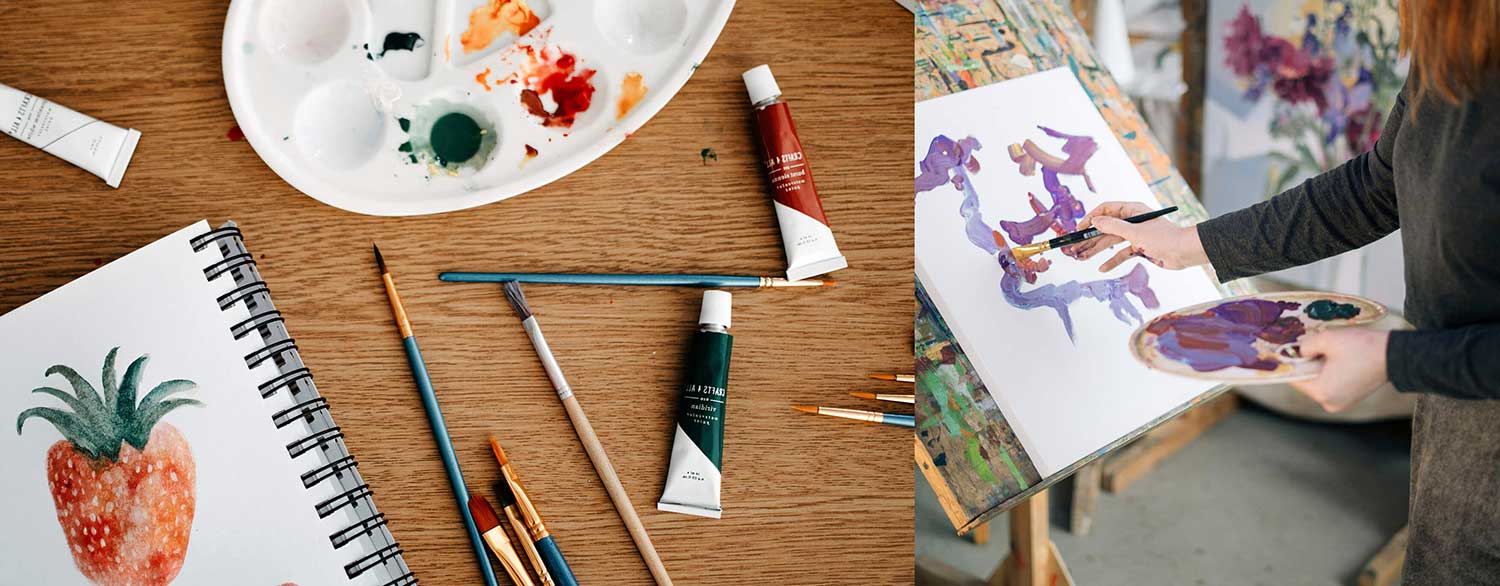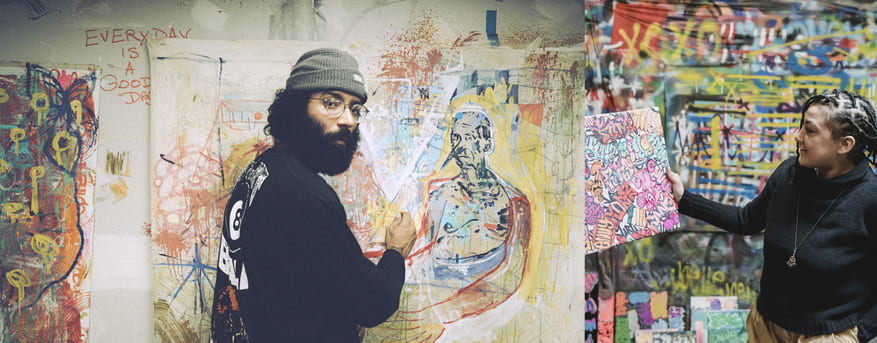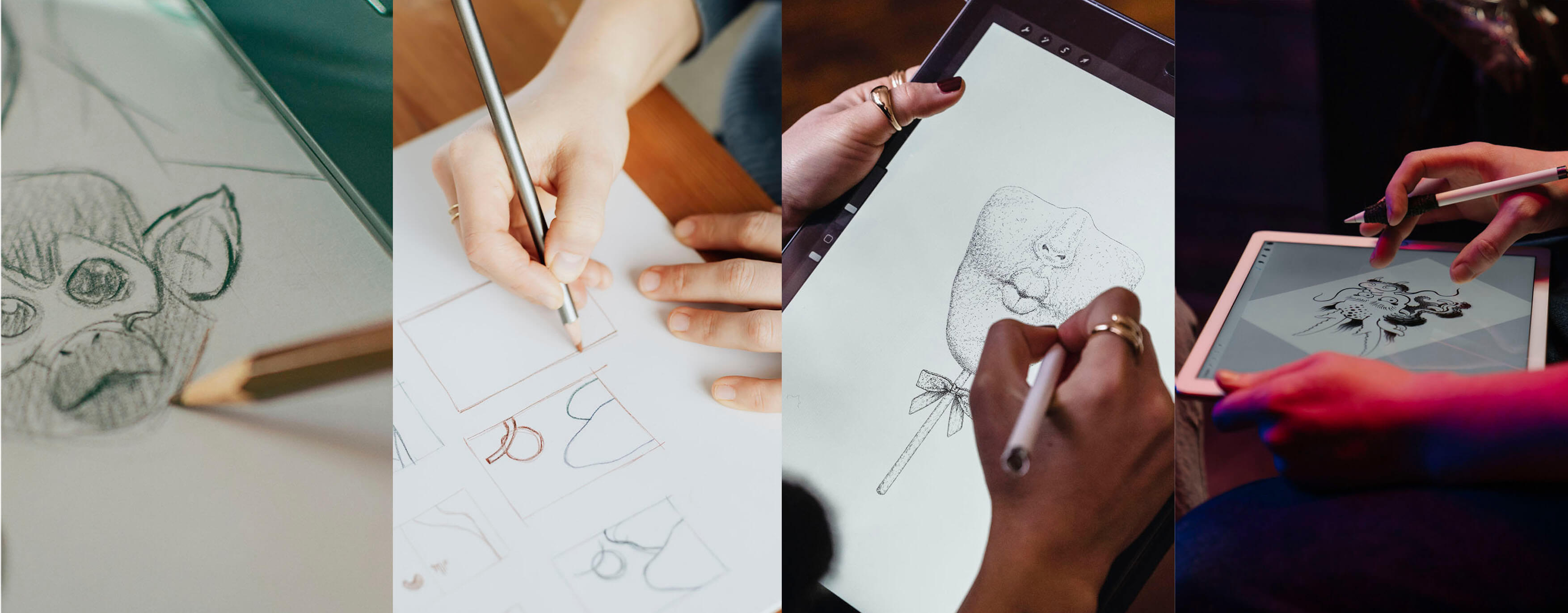There are certain art terms you need to know to talk about an art piece and engage in an interesting conversation. Frequently asked questions like “what does medium mean in art?”, highlight the need to know and understand essential vocabulary to thrive in the art world.
Suppose you still have doubts about what people mean when they talk about art niches, value, copyright, mediums, and other art terms. In that case, we have put together an essential art glossary to answer these common questions and help you expand your knowledge and enrich your art-related conversations.
Read part two of this series here.
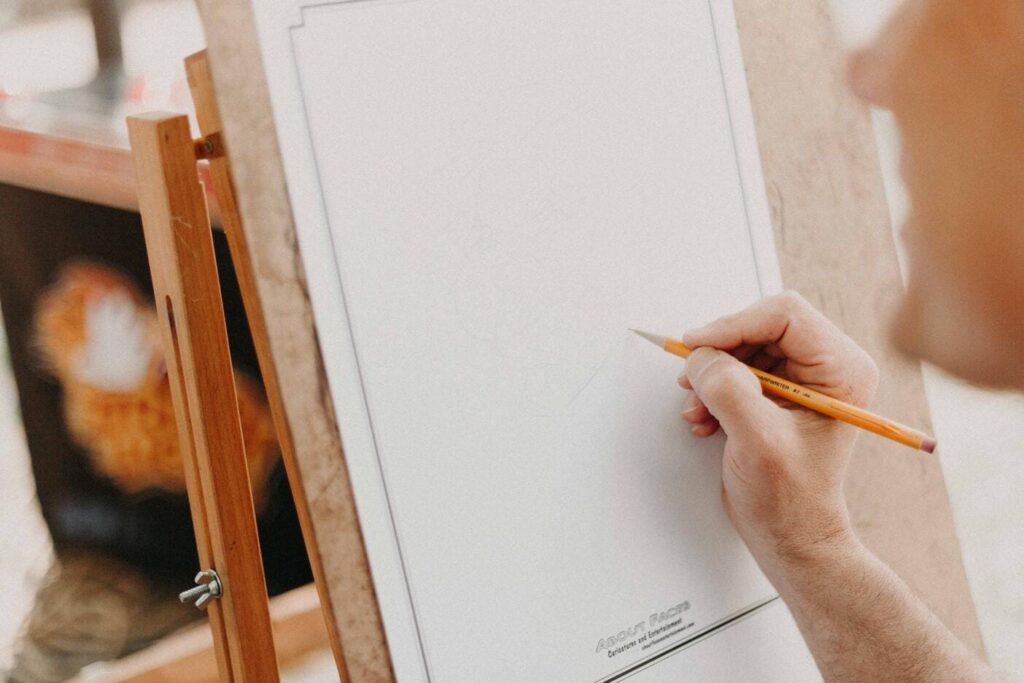
Medium is a word used to describe the materials used in the creation of an art piece
Contents
Medium
The medium is the substance used to create an art piece. If we dig deeper into the term and its most common uses, we can see it is used to describe several characteristics related to how an artwork is created.
For example, medium is commonly used to describe not only the substance but the materials, tools and techniques used in a certain artwork, for example, a medium can refer to the paints (substance) and the surface (material or support), that’s where descriptions like “acrylic on canvas”, “pastel painting” and even “digital painting” come from. For this particular use the plural of the word medium is “media”.
For more experienced artists and connoisseurs, a medium can also refer to a specific type of additive used to “bind” the pigments in paint. Encyclopedia Britannica defines medium as the “liquids added to paints to bind them and make them workable”.
The word medium can also be used to describe a more general characteristic of an art piece: the genre it belongs to. It is common to see the art genre itself listed as the medium along with the materials, for example: “ink over canvas painting”. Painting, sculpting, photographing, and sketching, these are all art mediums.
These are some of the most common types of Mediums in art:
–Sculptures: 3D figures or objects created in a variety of materials like clay, wood, stone, metal, and mixed media. Sculptures offer artists a new way to work with volume, shapes, forms, and perspective
–Prints: these are reproductions of an original artwork. Art Prints can be created with a wide range of materials and techniques from top-notch printing to woodcut presses, etching, lithography, screen printing, and more.
–Drawings: this is a fundamental and essential art medium that consists of sketching images over a surface with different kinds of art tools like pencils or charcoal, to stylus pens, and drawing pads. Is one of the skills most artists work to develop and master their craft.
–Painting: another essential skill for artists that consists of the application of different kinds of pigments (watercolors, oil, acrylics) over a surface to create an image. Painting is a versatile medium and technique for artists to explore their self-expression from the most abstract to landscapes, portraits, and more.
NFT
If you are still wondering what an NFT is, let’s give you a quick introduction to this world where art and cryptocurrencies intersect. An NFT is a non-fungible token. A token is a single unit, in this case, is the single unit that certifies the validity of the information stored in the blockchain that can include the original file of the art piece (JPG, GIF, MP3), and a traceable certification of ownership. Non-fungible means that this item can’t be interchanged or duplicated. NFT is a concept related to crypto art: crypto art is an art piece linked by a smart contract and minted as an NFT into the blockchain, where cryptocurrencies are used for transactions.
But remember crypto art is not a synonym for NFTs. Crypto art is a digital art piece that can be bought and sold with cryptocurrencies, while NFTs can take many forms, even some that are not art-related.
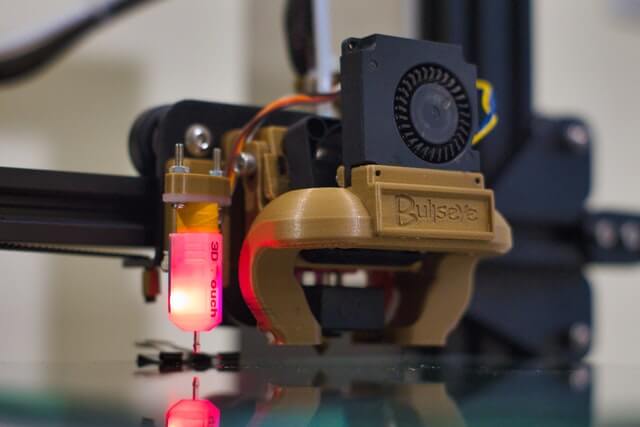
There are many techniques to achieve an art print: from sketching to high-tech prints like Giclée.
Giclée
This term is well known in the printmaking world. Giclée is a technique used to create art prints, it involves the use of a high-quality inkjet print that sprays archival ink over the premium paper to achieve a high-resolution reproduction of an image. It’s especially popular among digital artists.
Value
In the art world value has two meanings: one is subjective and the other is technical.
Value is one of the seven elements of art: shape, line, colors, form, texture, and space. Value is more than a synonym for art, it refers to how the artist captures the way light hits an object creating highlights and shadows, depth and volume. It can be easily seen on a grayscale.
Value also alludes to the cultural and social worth of an art piece, and it’s also the word used to talk about the market price of an art piece.
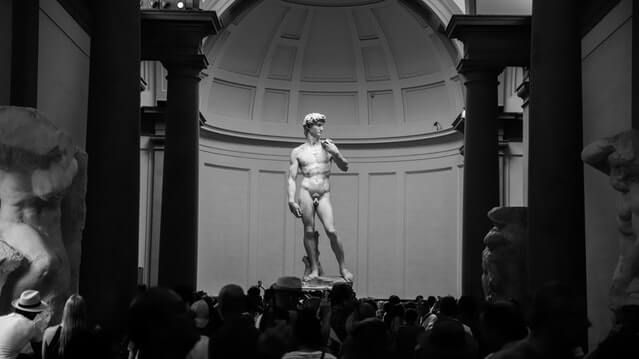
The term “patron-of-the-arts” had a highlight during the renaissance and this role was the backbone of many artists’ work.
Patron
The role of patronage came to rouse during renaissance times. Art Patrons were individuals or groups with political, economic, and sometimes, religious power, that supported artists. The patron was the person paying to get the artwork done and sometimes that meant they had a say in the size, materials, and even subject of the piece. This is how many masterpieces came to be. A patron not only gave economical support to the artist providing them with economic stability and secure work but being under the wing of a “patron of the arts” also gave the artist a push in their career. Having a patron sometimes meant not being looked at as an artisan but as a valuable artist.
Today, there are still individuals and institutions playing this role but with artists creating their own communities online, it is more common to see their own following turning into their patrons by giving both visibility and economic support to the artist or a specific project.
Copyright
This concept is directly related to law and the rights of artists over their creations. Once an artist has created a piece, they have the full copyright over it, this means: that automatically they have the right to present, create copies, distribute them, or create derivative works from it. An art piece can be sold in a direct transaction or in an auction, it can change hands but the copyright owner may still be the artist if it’s legally established. Copyright not only determines who has the right to use or reproduce an art piece, but who earns the profits and royalties this might produce.

An artist residency can be a turning point in a creator’s career: a chance to work on their craft and connect with other artists.
Art Residency
Art residencies are programs for artists to develop their craft. Over a fixed period of time (weeks to months), the artist is provided with a space to work with “ideal” conditions: from new tools to experiment with, to contact with other creators going through a similar process or tutors. An artist may earn a residency by applying and submitting their past work or a project they want to develop. Residencies are not only for creating new art, but they are also a place to create without daily life distractions, a space for artists to recognize their creative process and what they want to do, to experiment and try new things, and they tend to have a long term impact.
Niche
A niche in the art world refers to the type of art piece that appeals to a particular audience that is interested in that specific technique, subject, or theme. Niche art can also refer to the object of desire of that group, the type of art they look for and invest in. Even though this is a concept that is more closely related to the marketing world when applied to art it helps creators understand their role in the market and where their work can grow in demand.
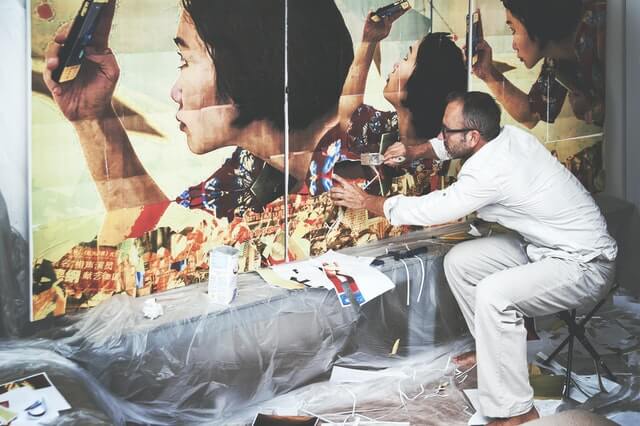
When talking about an art piece there are seven elements that are certain elements that are used to describe it: from space to color.
Elements
In art, just like in science, elements are components that can be mixed to obtain a final result, just that in this scenario the end result is an art piece. The elements are the visual components of art and there are seven of them: line, shape, form, space, texture, value, and color. By knowing them and manipulating them according to its intention and point of view, an artist is able to create a piece of art. Knowing the elements of art helps to understand an artist’s work, what it involves, and the artist’s thoughts about it.
Mixed media
This term was coined at the beginning of the 20th century to describe certain art pieces that were the result of the combination of different media, mediums or materials, and techniques. For example, an artwork that combines printmaking with a collage of photography and acrylic drippings over canvas can be considered mixed media art. Mixed media sometimes can be confused with multimedia art but these are not synonymous. Multimedia art refers to artworks that mix visual elements with interactive media.
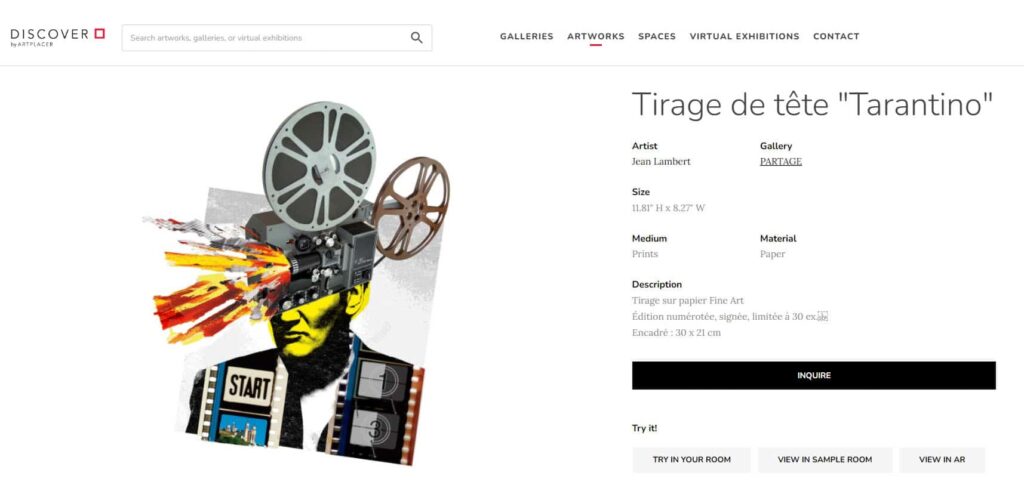
Knowing certain art terms can help you enrich the descriptions of your art pieces.
Art terms and what to do with them
Being able to communicate what you do as an artist and how you do it, is an essential part of sharing your work with the world. Enriching your vocabulary, and learning the history behind certain terms that have been used for centuries in the art world and even those that have come up to describe new techniques and genres is a way to broaden your understanding of the art world.
A clear way learning art terms helps artists: these can be used to polish the description they use to promote their work and make it visible. And we’re not talking only about creating a more professional curatorial or artist statement. Your resume, professional website, and even the description you make of your art pieces can benefit from learning new art terms that improve how you describe your work, techniques, and inspiration. For example, you can use this glossary to enrich your ArtPlacer profile.
When a visitor is taking a look at new artworks it helps to have a full description that goes beyond “acrylic on canvas” and expanding your vocabulary can help you have a better and more effective explanation of what your art piece communicates.
Now that you know these essential art terms it’s time to integrate them into your conversations!
